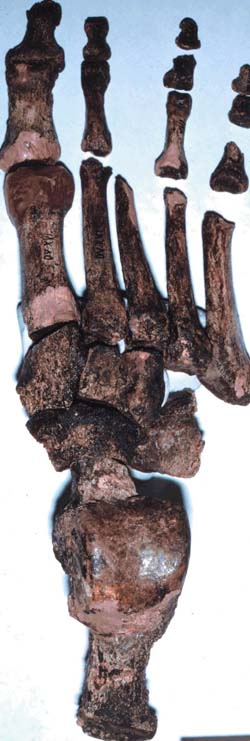Those high-tech, air-filled, light-as-a-feather sneakers on your feet are a far cry from the leather slabs our ancestors wore for protection and support.

But believe it or not, our modern-day Nikes and Reeboks are direct descendants of the first supportive footwear that new research suggests came into use in western Eurasia 26,000-30,000 years ago.
Erik Trinkaus, Ph.D., the Mary Tileston Hemenway Professor of Physical Anthropology in Arts & Sciences, derived those dates by analyzing anatomical evidence of early modern humans, which suggests a reduction in the strength of the smaller toes in Upper Paleolithic humans, while there was little change in leg strength.
Trinkaus’ research was published in the July issue of the Journal of Archaeological Science.
He argues that early humans living in far northern climates began to put insulation on their feet around 500,000 years ago. While archaeological evidence suggests that protective footwear was in use by at least the middle Upper Paleolithic in portions of Europe, the frequency of use and the actual mechanical protection provided by that footwear was unclear.
Use of protective footwear has been difficult to document because in most cases the footwear does not survive the test of time.
Lacking such physical evidence, Trinkaus analyzed the foot bones of western Eurasian Middle Paleolithic and middle Upper Paleolithic humans. In doing so, he found the anatomy of their feet began to change starting around 26,000 years ago.
“I discovered that the bones of the little toes of humans from that time frame were much less strongly built than those of their ancestors, while their leg bones remained large and strong,” Trinkaus said. “The most logical cause would be the introduction of supportive footwear.”
During barefoot walking, the smaller toes flex for traction, keeping the toe bones strong. Supportive footwear lessens the roll of the little toes, thus weakening them.